If you’re anything like me, you know how empty spots in your yard can be a real head-scratcher. Ground cover plants are the unsung heroes that fill those bare patches while keeping weeds at bay.
But what about folks who aren’t sure which ground covers work best for their space, or how to get started with them? Read on…spoiler alert: YOU’RE ABOUT TO FIND SOME GREAT OPTIONS!
Periwinkle

Looking for a reliable ground cover that handles shade? Periwinkle, a perennial in zones 4-9, spreads steadily to create a mat of glossy evergreen leaves 4-6 inches tall.
The flowers appear in spring and repeat sporadically through fall – choose from blue, purple, or white blooms. Common varieties include ‘Bowles Blue’ with deep purple-blue flowers, ‘Alba’ featuring white blooms, and ‘Ralph Shugert’ with dark green leaves edged in white.
Periwinkle grows best in partial to full shade and average soil. It stays green through winter in mild climates and resists damage from deer and rabbits. Once established, it tolerates both drought and heat.
Creeping Thyme

When you want an herb that pulls double duty as a hardy ground cover, creeping thyme is a first-rate choice. Growing just 2-3 inches tall, this perennial forms dense mats of tiny aromatic leaves that release their scent when stepped on.
From late spring through summer, masses of tiny pink, purple, or white flowers blanket the foliage, attracting pollinators. Tough and drought-tolerant once established, creeping thyme thrives in full sun and well-drained soil.
Hardy in zones 4-9, it handles heat well and stays evergreen in mild climates. Popular varieties include ‘Pink Chintz’ with salmon-pink blooms, ‘Elfin’ with purple flowers, and ‘Coccineus’ with bright crimson blossoms.
Sedum
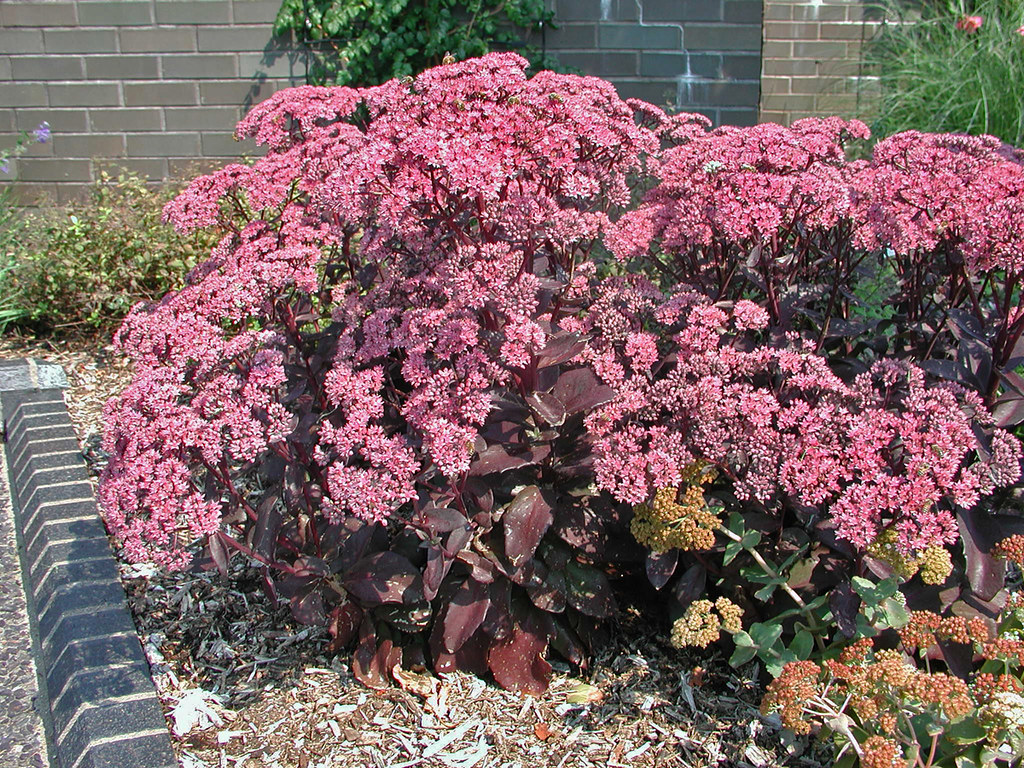
Low-growing sedum is a tough-as-nails ground cover that takes root wherever it touches the soil. This hardy perennial (zones 3-9) features fleshy leaves in shades ranging from blue-green to burgundy.
Most varieties form dense mats just 4-6 inches tall, spreading steadily to create thick coverage. Small star-shaped flowers in pink, yellow or white appear in late summer, attracting butterflies and bees.
Perfect for rock gardens and sunny slopes, sedum thrives in poor soil and handles drought with ease. Try ‘Dragon’s Blood’ with dark red leaves, ‘Blue Spruce’ for silvery-blue foliage, or ‘Tricolor’ featuring green, pink and white variegated leaves.
Irish Moss
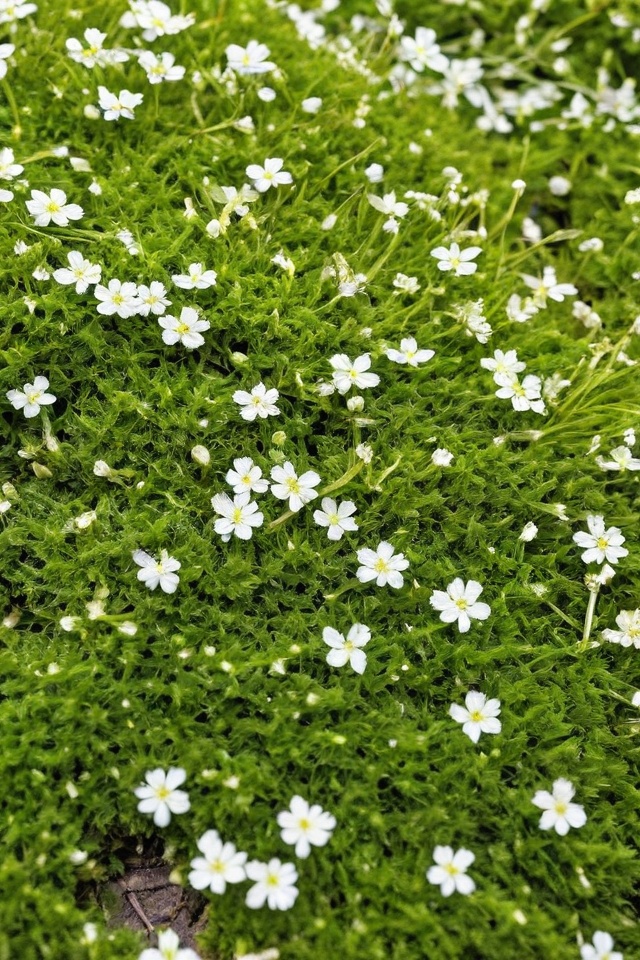
Irish Moss creates a dense, low-growing carpet of bright green foliage that looks right at home between stepping stones or along pathways. This perennial ground cover grows just 1-2 inches tall and spreads slowly but steadily.
Tiny white flowers appear in late spring, dotting the emerald mat like stars. Hardy in zones 4-8, it performs best in partial shade with consistent moisture but can handle some sun in cooler regions.
While not a true moss, it mimics the look perfectly. Common varieties include ‘Aurea’ with golden-tinged leaves, ‘Minima’ for extra-compact growth, and ‘Scottish Moss’ with traditional deep green coloring.
Lamb’s Ear

Known for its fuzzy, silvery leaves that feel as soft as their namesake, Lamb’s Ear is a hardy perennial that adds gentle texture to any garden. The leaves grow in tight rosettes, staying low to the ground at 4-6 inches tall, while flower stalks reach 12-18 inches.
Small purple flowers appear in early summer, though many gardeners remove them to focus on the foliage. Thrives in full sun to part shade and tolerates poor soil and drought once established.
Disease resistant and deer proof. Hardy in zones 4-8. Popular varieties include ‘Big Ears’ with extra-large leaves, ‘Silver Carpet’ which rarely flowers, and ‘Helene von Stein’ offering taller, more upright growth.
Bugleweed (Ajuga reptans)

Low-growing bugleweed spreads steadily to form a dense carpet of glossy leaves that smother weeds in sun or shade. This hardy perennial thrives in zones 3-9 and stays green all winter in moderate climates.
The spiky blue-purple flowers appear in late spring, creating a blanket of color 6-8 inches tall. Popular varieties include ‘Burgundy Glow’ with purple-tinged silver and green leaves, ‘Chocolate Chip’ with small bronze-purple foliage, and ‘Dixie Chip’ featuring variegated cream and green leaves.
Bugleweed handles poor soil and drought once established, though it grows best with regular water. Deer and rabbits tend to leave it alone.
Sweet Woodruff

Sweet Woodruff creates a carpet-like groundcover with small white flowers that bloom in spring above emerald green, whorled leaves. This hardy perennial thrives in zones 4-8 and spreads steadily without becoming invasive.
Growing 6-8 inches tall, it performs well in partial to full shade and prefers rich, well-drained soil. The foliage releases a sweet hay-like fragrance when crushed or dried.
Common varieties include ‘Rosea’ with pink flowers, ‘Alba’ featuring pure white blooms, and ‘Variegata’ showing cream-edged leaves.
Sweet Woodruff handles drought once established but appreciates regular watering during hot spells. Disease resistant and deer tolerant.
Bishop’s Weed

Also known as goutweed, Bishop’s weed is a fast-spreading perennial that thrives in zones 4-8. The variegated green and white leaves form a dense carpet that stays fresh-looking through the growing season.
Tiny white flowers appear in late spring, rising 6-8 inches above the foliage. While some gardeners consider it aggressive, it’s perfect for large areas where you need reliable coverage.
Grows well in sun or partial shade and tolerates poor soil and drought once established.
Popular varieties include ‘Snow on the Mountain’ with creamy white edges, ‘Variegatum’ featuring mottled leaves, and ‘Flora Plena’ with double flowers. Plant with caution as it can outcompete neighboring plants.
Pachysandra
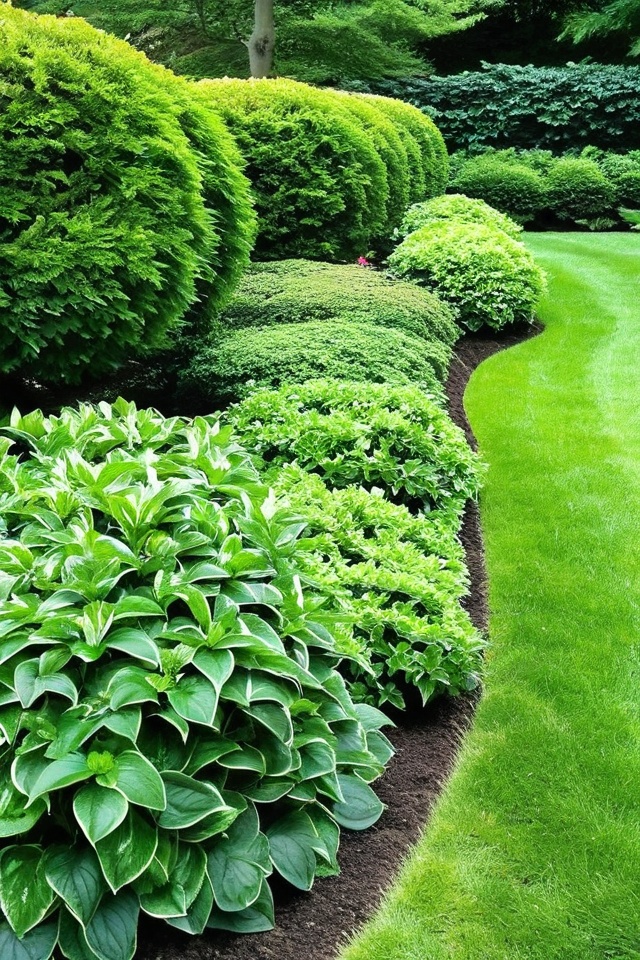
A classic evergreen ground cover that thrives in zones 4-8, pachysandra delivers year-round interest with little maintenance. Its glossy green leaves grow in thick mats that effectively suppress weeds, making it an excellent choice for shady spots under trees.
In early spring, small white flower spikes add interest. Japanese pachysandra is the most common variety, with deep green foliage, while ‘Green Carpet’ offers a more compact form.
‘Silver Edge’ sports green leaves with white margins. This perennial prefers rich, well-drained soil and partial to full shade.
It’s deer resistant and handles cold well but needs protection from harsh winter winds. Grows best in moderate climates – not suited for hot, humid regions.
Creeping Jenny

Low-growing Creeping Jenny spreads quickly to create thick carpets of round, penny-shaped leaves that stay green year-round in mild climates. This hardy perennial thrives in zones 3-8 and performs well in both sun and shade, though leaf color is brightest in full sun.
Golden-yellow flowers appear in early summer, creating bright pops of color. While the standard variety has green foliage, ‘Aurea’ offers golden-yellow leaves and ‘Burgundy Glow’ features purple-tinged foliage.
Plants are heat tolerant once established and prefer consistently moist soil. Disease resistant and deer resistant, making it an excellent choice for problem areas.
Barrenwort
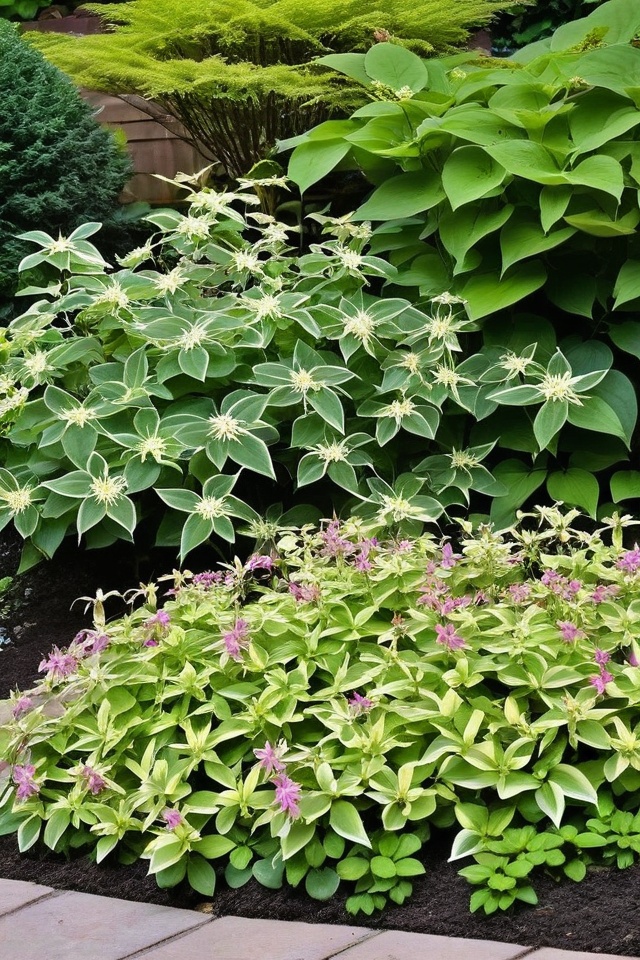
Looking to fill a tricky shaded spot? Barrenwort (Epimedium) is a hardy perennial ground cover that thrives in zones 5-9. The heart-shaped leaves start out with pink or red tints in spring before maturing to green, and stay attractive through winter in mild climates.
Small, dainty flowers bloom in early spring, dancing above the foliage on wiry stems. Colors range from yellow to pink to purple, depending on variety. ‘Rubrum’ offers rosy pink blooms, ‘Sulphureum’ produces bright yellow flowers, and ‘Lilafee’ features purple petals.
This tough plant handles dry shade like a champ and resists both deer and rabbits. Grows best in well-drained soil with regular water until established.
Ground Morning Glory
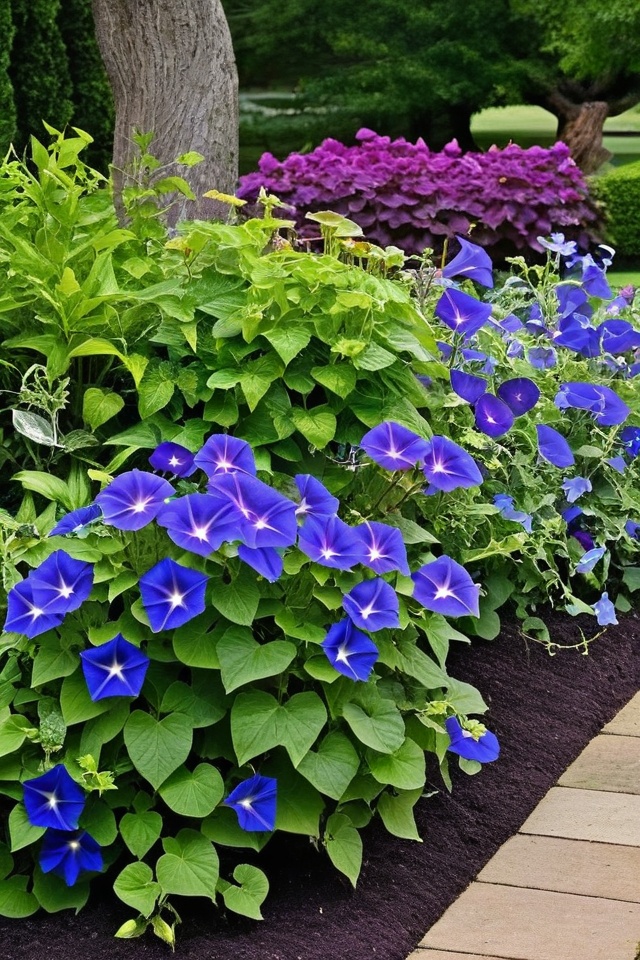
Morning Glory is a fast-growing annual vine that spreads 8-10 feet wide to create thick carpets of dark green, heart-shaped leaves. Small, trumpet-shaped flowers bloom from early summer until frost in shades of blue, pink, purple or white.
The ‘Heavenly Blue’ variety delivers classic sky-blue blooms, while ‘Flying Saucers’ offers unique striped petals. These hardy vines flourish in zones 2-11 and can handle drought once established.
They need full sun and well-draining soil to thrive. The vines will readily climb nearby structures or trail along the ground. Self-seeds readily in ideal conditions but is easily controlled.
Mondo Grass
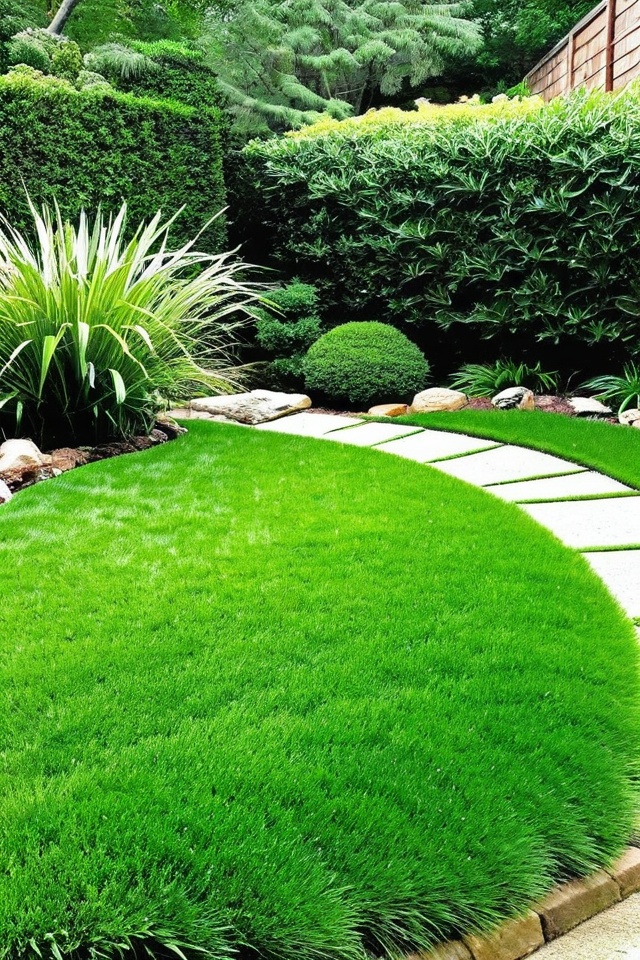
Growing 6-12 inches tall, mondo grass spreads slowly to form dense, grass-like mounds ideal for edging gardens and paths. This hardy perennial (zones 6-11) grows well in both sun and shade, keeping its arched evergreen foliage year-round.
Small lilac flowers appear in late summer, followed by dark purple berries. Standard mondo grass has deep green leaves, while ‘Gyoku Ryu’ stays extra compact and ‘Black Mondo’ offers nearly black foliage.
Drought tolerant once established and rarely bothered by pests or deer. Performs best in rich, well-draining soil and moderate climates, handling both heat and cold well.

